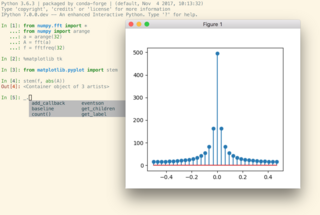
The Grace Murray Hopper Award has been awarded by the Association for Computing Machinery (ACM) since 1971. The award goes to a computer professional who makes a single, significant technical or service contribution at or before age 35.

Ben Shneiderman is an American computer scientist, a Distinguished University Professor in the University of Maryland Department of Computer Science, which is part of the University of Maryland College of Computer, Mathematical, and Natural Sciences at the University of Maryland, College Park, and the founding director (1983-2000) of the University of Maryland Human-Computer Interaction Lab. He conducted fundamental research in the field of human–computer interaction, developing new ideas, methods, and tools such as the direct manipulation interface, and his eight rules of design.

Fernanda Bertini Viégas is a Brazilian computer scientist and graphical designer, whose work focuses on the social, collaborative and artistic aspects of information visualization.

IPython is a command shell for interactive computing in multiple programming languages, originally developed for the Python programming language, that offers introspection, rich media, shell syntax, tab completion, and history. IPython provides the following features:
Jock D. Mackinlay is an American information visualization expert and Vice President of Research and Design at Tableau Software. With Stuart Card, George G. Robertson and others he invented a number of information visualization techniques.

Joseph M. Hellerstein is an American professor of Computer Science at the University of California, Berkeley, where he works on database systems and computer networks. He co-founded Trifacta with Jeffrey Heer and Sean Kandel in 2012, which stemmed from their research project, Wrangler.
Ed Huai-Hsin Chi is a Taiwanese American computer scientist and research scientist at Google, known for his early work in applying the theory of information scent to predict usability of websites.
D3.js is a JavaScript library for producing dynamic, interactive data visualizations in web browsers. It makes use of Scalable Vector Graphics (SVG), HTML5, and Cascading Style Sheets (CSS) standards. It is the successor to the earlier Protovis framework. Its development was noted in 2011, as version 2.0.0 was released in August 2011. With the release of version 4.0.0 in June 2016, D3 was changed from a single library into a collection of smaller, modular libraries that can be used independently.

Jeffrey Adgate "Jeff" Dean is an American computer scientist and software engineer. Since 2018, he has been the lead of Google AI, Google's AI division.

Jean-Daniel Fekete is a French computer scientist.
Sheelagh Carpendale is a Canadian artist and computer scientist working in the field of information visualization and human-computer interaction.
Social Visualization is an interdisciplinary intersection of information visualization to study creating intuitive depictions of massive and complex social interactions for social purposes. By visualizing those interactions made not only in the cyberspace including social media but also the physical world, captured through sensors, it can reveal overall patterns of social memes or it highlights one individual's implicit behaviors in diverse social spaces. In particular, it is the study “primarily concerned with the visualization of text, audio, and visual interaction data to uncover social connections and interaction patterns in online and physical spaces. ACM Computing Classification System has classified this field of study under the category of Human-Centered Computing (1st) and Information Visualization (2nd) as a third level concept in a general sense.

Trifacta is a privately owned software company headquartered in San Francisco with offices in Bengaluru, Boston, Berlin and London. The company was founded in October 2012 and primarily develops data wrangling software for data exploration and self-service data preparation on cloud and on-premises data platforms.
Data exploration is an approach similar to initial data analysis, whereby a data analyst uses visual exploration to understand what is in a dataset and the characteristics of the data, rather than through traditional data management systems. These characteristics can include size or amount of data, completeness of the data, correctness of the data, possible relationships amongst data elements or files/tables in the data.
Claudio Silva is a Brazilian American computer scientist and data scientist. He is a professor of computer science and engineering at the New York University Tandon School of Engineering, the head of disciplines at the NYU Center for Urban Science and Progress (CUSP) and affiliate faculty member at NYU's Courant Institute of Mathematical Sciences. He co-developed the open-source data-exploration system VisTrails with his wife Juliana Freire and many other collaborators. He is a former chair of the executive committee for the IEEE Computer Society Technical Committee on Visualization and Graphics.
Michael Bostock is an American computer scientist and data-visualisation specialist. He is one of the co-creators of Observable and noted as one of the key developers of D3.js, a JavaScript library used for producing dynamic, interactive, online data visualizations. He was also involved in the preceding Protovis framework.
Gordon L. Kindlmann is an American computer scientist who works on information visualization and image analysis. He is recognized for his contributions in developing tools for tensor data visualization.

Sean Kandel is Trifacta's Chief Technical Officer and Co-founder, along with Joseph M. Hellerstein and Jeffrey Heer. He is known for the development of new tools for data transformation and discovery and is the co-developed of Data Wrangler, an interactive tool for data cleaning and transformation.
Jessica Hullman is a computer scientist and the Ginni Rometty associate professor of Computer Science at Northwestern University. She is known for her research in Information visualization.
Tim Kraska is a German computer scientist specializing in data systems and the intersection of systems and machine learning. He is currently an associate professor of computer science at the Massachusetts Institute of Technology.









